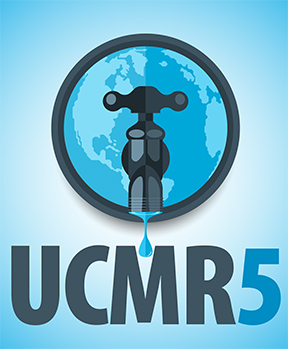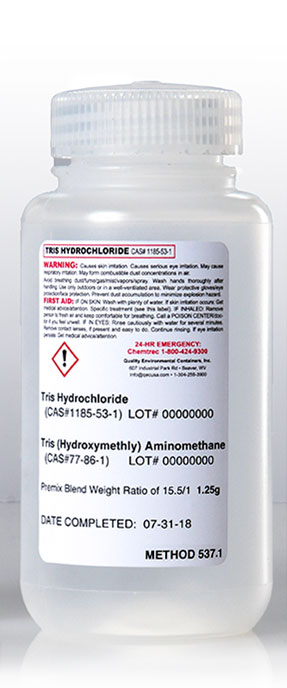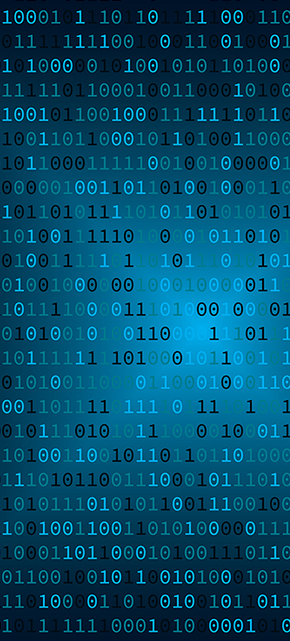 Spring • 2021 Spring • 2021 |
In this Issue: |
|
|
Public comments on proposed UCMR 5 EPA published the proposed fifth Unregulated Contaminant Monitoring Rule (UCMR 5) March 11, 2021 in the Federal Register. The proposed rule would require sample collection for 29 per- and polyfluoroalkyl substances, PFAS (https://www.wwdmag.com/regulations/us-epa-regulate-pfas-drinking-water) and lithium, between 2023 and 2025. This sampling would use analytical methods developed by EPA and consensus organizations, according to the proposed rule. The UCMR 5 program will continue to include public water system (PWS) monitoring for utilities serving a population larger than 10,000 people. Additionally, all PWSs serving between 3,300 and 10,000 people must monitor for the contaminants in a particular UCMR cycle and only a nationally representative sample of PWSs serving fewer than 3,300 people are required to monitor for those contaminants. EPA must also vary the frequency and schedule for monitoring based on the number of persons served, the source of supply, and the contaminants likely to be found, according to the rule. It also stated that data collection for Legionella and four haloacetonitriles (dichloroacetonitrile, dibromoacetonitrile, trichloroacetonitrile, and bromochloroacetonitrile) would not be useful to EPA's regulatory deliberations. The 60-day public comment period on the proposed UCMR 5 recently closed on May 10, 2021. Some of the more notable comments included the following: A comment submitted by the Natural Resources Defense Council called upon the EPA to approve additional methods to detect more PFAS compounds, a recommendation echoed by several institutions and individuals. “Specifically, we urge that in addition to requiring that public water systems test for the 29 PFAS that are found using EPA Methods 533 and 537.1, that the agency also include a requirement that public water systems covered by the rule test for a broader array of PFAS. This could be achieved by the addition of a method, such as the Total Oxidizable Precursors (TOP) Assay or a Total Organic Fluorine (TOF) assay, that provides a more comprehensive picture of the total PFAS present in a sample,” the NRDC comment stated. Noted environmental scientist Andrew Eaton’s comment proposed that “EPA reconsider the [proposed] MRLs [minimum reporting limits] for UCMR 5 [3-5 ng/L] for the PFAS compounds and reduce them to 2 ng/L for all compounds.” Eaton’s argument is that a number of states and jurisdictions currently require the 2 ng/L MRL for PFAS, and that the preponderance of labs are capable of reporting that limit. Comments by the American Water Works Association and the National Ground Water Association took note that UCMR 5 will apply to PWSs with as few as 3,300 subscribers, an increase from 5,164 to 10,311. Both organizations expressed concerns whether UCMR 5 adequately addressed the training, manpower, and cost burdens placed upon the smaller systems. Written comments posted to the EPA’s website can be accessed here: https://www.regulations.gov/document/EPA-HQ-OW-2020-0530-0001/comment Sources: Water & Wastes Digest, March 15, 2021 NDAA could double contaminants regulated under UCMR 5 As established, the UCMR program is limited to studying 30 contaminants. However, a clause in the 2020 National Defense Authorization Act (NDAA) stipulates that the 29 unregulated PFAS included in UCMR 5 shall not count toward the limit. Therefore, UCMR 5 could include up to 59 contaminants: the 29 PFAS for which EPA has validated a drinking water method plus up to 30 other non-PFAS contaminants. Source: Pace Analytical, LLC |
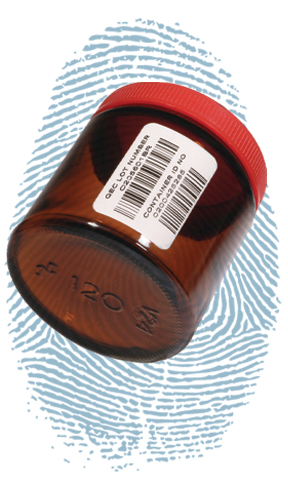 |
Sample integrity through traceability The integrity of the sample collection process and the defensibility of results depends the reliability of your chain of custody and the traceability of your sample container at every stage of its journey. A barcode is effectively a “fingerprint” unique to each container. This allows a provable chain of custody for the container and its contents throughout collection and analysis. Barcodes are standard on QEC Level 3 (“certified”) containers and are available for other preparation levels. Customizable bar codes can be created at the customer’s request and can be as simple or sophisticated as needed. The simplest bar code contains only the container ID and container lot number. More advanced bar codes can include additional information such as the preservative code, preservative lot number, and production date. Advanced bar code labels can be a combination of text and bar codes, or have all information in code form to be scanned directly into a LIMS system. Custom-Preserved™ barcodes can also include the preserving code and the preservative lot number along with the individual container ID, important as a means to identify and confirm the quality and efficacy of the preservative compound dosed in a specific container. The preservative used in a specific container can even be traced back through container preparation at QEC to origination at the manufacturer. For containers preserved with hydrochloric acid or sodium bisulfate, QEC uses its own unique process to further reduce the level of contaminants in the preservative. All preservatives are obtained by QEC from manufacturers world-renowned for the purity and quality of their chemicals The rigorous standards QEC containers must meet means they can and do perform well in environmental analysis, as well as virtually any laboratory or analytical application: pharmaceutical, agriculture, energy, academia, many others. For complete information on QEC’s barcoding capabilities and what they can mean for your laboratory, please contact QEC sales manager Jason Kesterson (800-255-3950) for a full discussion. |
 |
PFAS remediation challenges Part of the difficulty with PFAS remediation is that PFAS contain carbon-fluorine bonds—some of the strongest chemical bonds found in nature. The same chemical stability that makes PFAS useful also makes them resistant to the natural processes that break down other pollutants. The remediation process is usually split between separation and destruction techniques. Of the PFAS treatments currently used, the most effective methods combine separation and destruction technologies. The three main separation technologies-- Granted Activated Carbon (GAC), ion exchange resin, and high-pressure membranes-- use adsorption to isolate and capture PFAS molecules. The GAC adsorption process is typically combined with incineration because the two methods are relatively inexpensive and effective, but some studies question the environmental impacts of burning PFAS. Additionally, while GAC can effectively remove long-chain PFAS like perfluorooctanesulfonic acids and perfluorooctanoic acids, the treatment usually fails to catch short-chain PFAS which were used to replace their long-chain counterparts in manufacturing years ago. This limitation severely hampers GAC’s future efficacy. Ion exchange resin is usually made of tiny hydrocarbon beads that are installed in packed beds. The charged material attracts and binds PFAS contaminants. The beds can then be incinerated or cleaned with a chemical flush and reused. The flush does not destroy PFAS molecules, but rather creates a toxic liquid byproduct that must be stored or otherwise destroyed. Like GAC, ion exchange resin is ineffective for short-chain PFAS. High-pressure membranes can remove both long and short-chain PFAS. But the technology is exorbitantly expensive and extremely delicate. The cost of replacing the membranes far exceeds the cost of replacing carbon sheets or resin beds. Membranes also produce a highly toxic concentrate that must be stored or disposed of separately. One of the more promising methods utilizes high voltage to oxidize and defluorinate PFAS molecules. This process is ideal partially because it leaves no toxic waste: the PFAS compounds are mineralized and produce only harmless fluoride ions, carbon dioxide, and water. Electrochemical destruction requires too much energy to work for large-scale operations. But for small, acute points of contamination, researchers are hopeful that electrochemical destruction could be an effective remediation technique. Another breakthrough process called sonolysis uses soundwaves to degrade PFAS chemicals in the water. Electric current is converted into sound frequencies that create microbubbles. When these bubbles burst, they release significant levels of heat and energy--blasting PFAS molecules apart and breaking the water down into free radicals. One major benefit of sonolysis is it can effectively destroy PFAS molecules in groundwater while the water is still in the ground, making it far more environmentally friendly and cost-efficient than any current treatment process. PFAS remediation technologies face significant challenges: Current technologies, (two of which are less effective against short-chain PFAS compounds) are expensive and create harmful byproducts. Emerging technologies show a lot of promise inside laboratory settings, but it remains to be seen how effective or affordable they would be when deployed on a large scale. More political leaders and researchers are seeing PFAS as a substantial environmental issue. A responsible combination of legislative and budgetary influence combined with scientific innovation could soon overcome these technological and financial hurdles. Source: Babcock Laboratories, April 26, 2021: https://www.babcocklabs.com/news/pfas-remediation-time-to-clean-up-our-act/2021 |
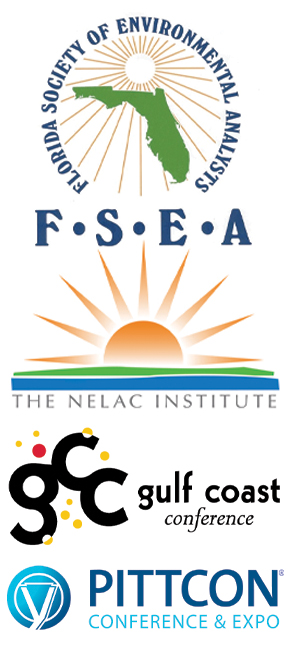 |
Just can't wait to get on the road again This month (May) QEC is participating as a virtual exhibitor at the Florida Society for Environmental Analysis spring meeting. This could be the last of the fully virtual industry conferences since many of the upcoming industry expos will be hybrid live/virtual or fully live events. The National Environmental Monitoring Conference is scheduling both a live event August 2 – 4 in Bellevue, Washington and a virtual online conference to run the week of August 9. QEC is participating in both the live and virtual conferences. The conference will include:
In October QEC will make its first appearance as an exhibitor at the Gulf Coast Conference, a major event for analytical chemistry, in Galveston, Texas. The QEC staff is eager to be back in Texas since the last two TCEQ Expos were cancelled due to the pandemic. The Gulf Coast Conference will be October 11-13 at the Moody Gardens Convention Center in Galveston. We look forward to the TCEQ Expo also coming back in 2022. March 5-9, 2022 QEC will make its 27th appearance at Pittcon Conference & Expo, which will be back to a live event in Atlanta, Georgia. This year’s virtual Pittcon was a great success for QEC, but we l;ook forward to the collegial atmosphere of attending in person. |
|
|
Using chaos as the ultimate cybersecurity defense Researchers at Ohio State University have found a way to use chaos to help develop digital fingerprints for electronic devices that may be unique enough to foil even the most sophisticated hackers. Just how unique are these fingerprints? The researchers believe it would take longer than the lifetime of the universe to test for every possible combination available. The researchers created a new version of an emerging technology called physically unclonable functions, or PUFs, that are built into computer chips. These new PUFs could potentially be used to create secure ID cards, to track goods in supply chains and as part of authentication applications, where it is vital to know that you're not communicating with an impostor. "The SolarWinds hack that targeted the US government really got people thinking about how we're going to be doing authentication and cryptography," said Daniel Gauthier, professor of physics at Ohio State University. "We're hopeful that this could be part of the solution." The new solution makes use of PUFs, which take advantage of tiny manufacturing variations found in each computer chip—variations so small that they aren't noticeable to the end user. There's a wealth of information in even the smallest differences found on computers chips that can be used to create PUFs. These slight variations—sometimes seen only at the atomic level—are used to create unique sequences of 0s and 1s that researchers in the field call "secrets." "We believe we have found a way to produce an uncountably large number of secrets to use that will make it next to impossible for hackers to figure them out, even if they had direct access to the computer chip," Gauthier said. Current PUFs contain only a limited number of secrets and can still be successfully attacked. The key to creating the improved PUF is chaos, a topic that Gauthier has studied for decades. No other PUFs have used chaos in the way demonstrated in this study, he said. The chaos amplifies the small manufacturing variations found on the chip. Even the smallest differences, when amplified by chaos, can change the entire class of possible outcomes—in this case, the secrets that are being produced. Chaos expands the number of secrets that are available on a chip. This will likely confuse any attempts at predicting the secrets. "We want the process to create patterns that are too complex for hackers to attack and guess. But the pattern must be reproducible so we can use it for authentication tasks," Gauthier said. The researchers calculated that their PUF could create 1077 secrets. If a hacker could guess one secret every microsecond—1 million secrets per second. It would take the hacker longer than the life of the universe, about 20 billion years, to guess every secret available in that microchip, Gauthier said. As part of the study, the researchers tried in several ways to attack their PUF—none of which succeeded. They are now offering their data to other research groups to see if they can find any vulnerabilities. Gauthier said the hope is that PUFs like this could help beef up security against even state-sponsored hacker attacks, such as SolarWinds. "We see this technology as a real game changer in cybersecurity. This novel approach to a strong PUF could prove to be virtually un-hackable.” Source: Lab Manager News, April 8, 2021. https://www.labmanager.com/news/scientists-harness-chaos-to-protect-devices-from-hackers-25624 © 2021 | Quality Environmental Containers, Inc. |


